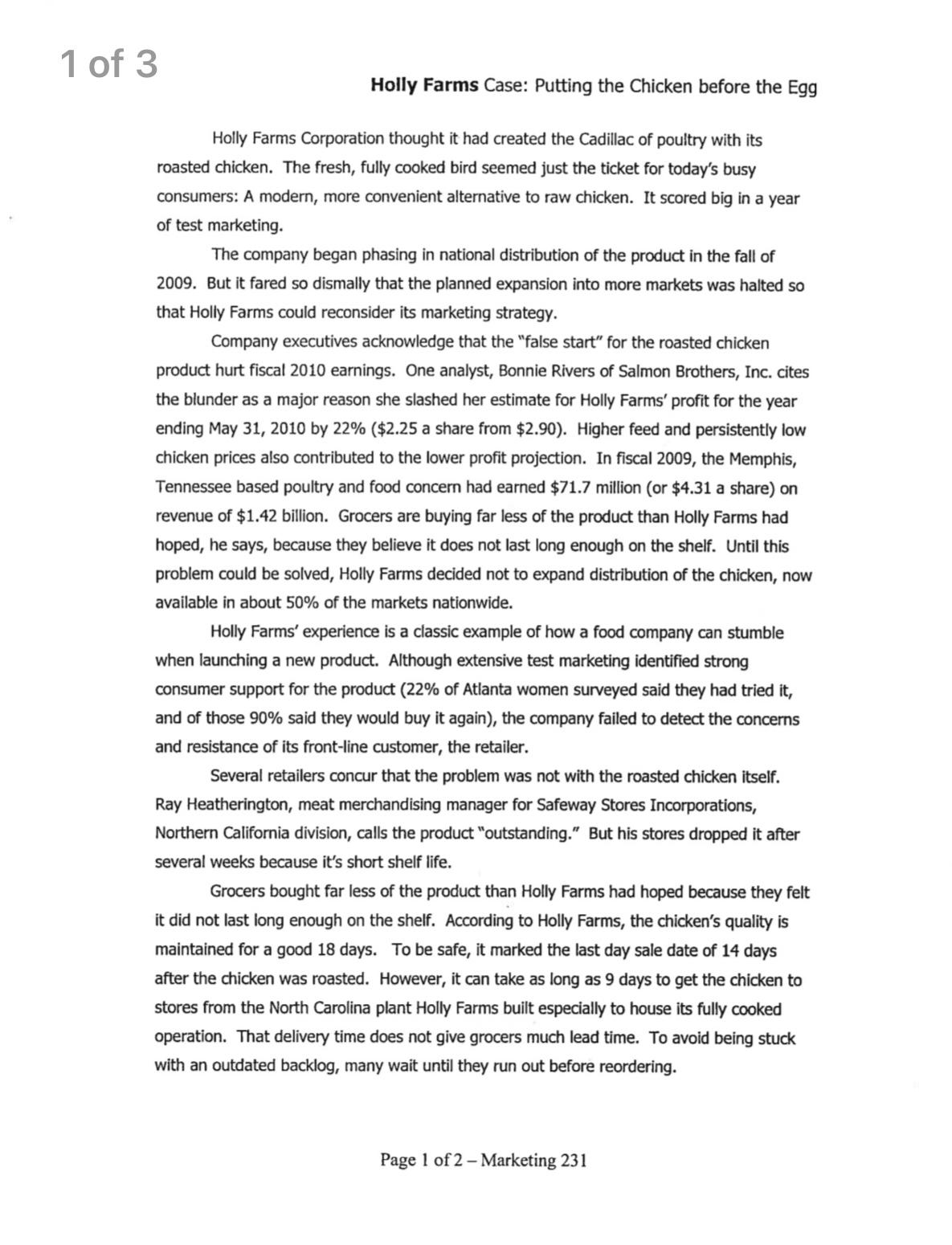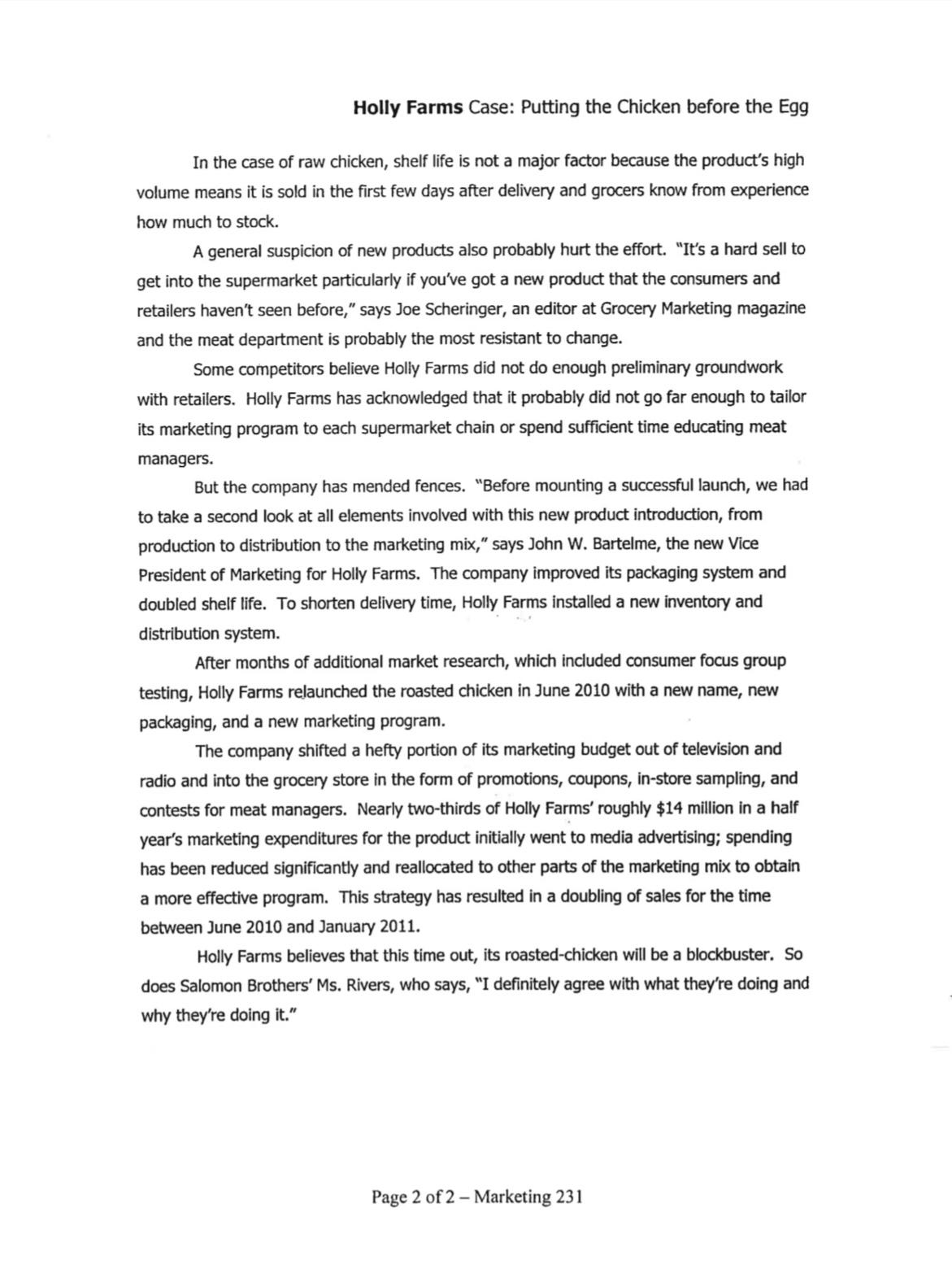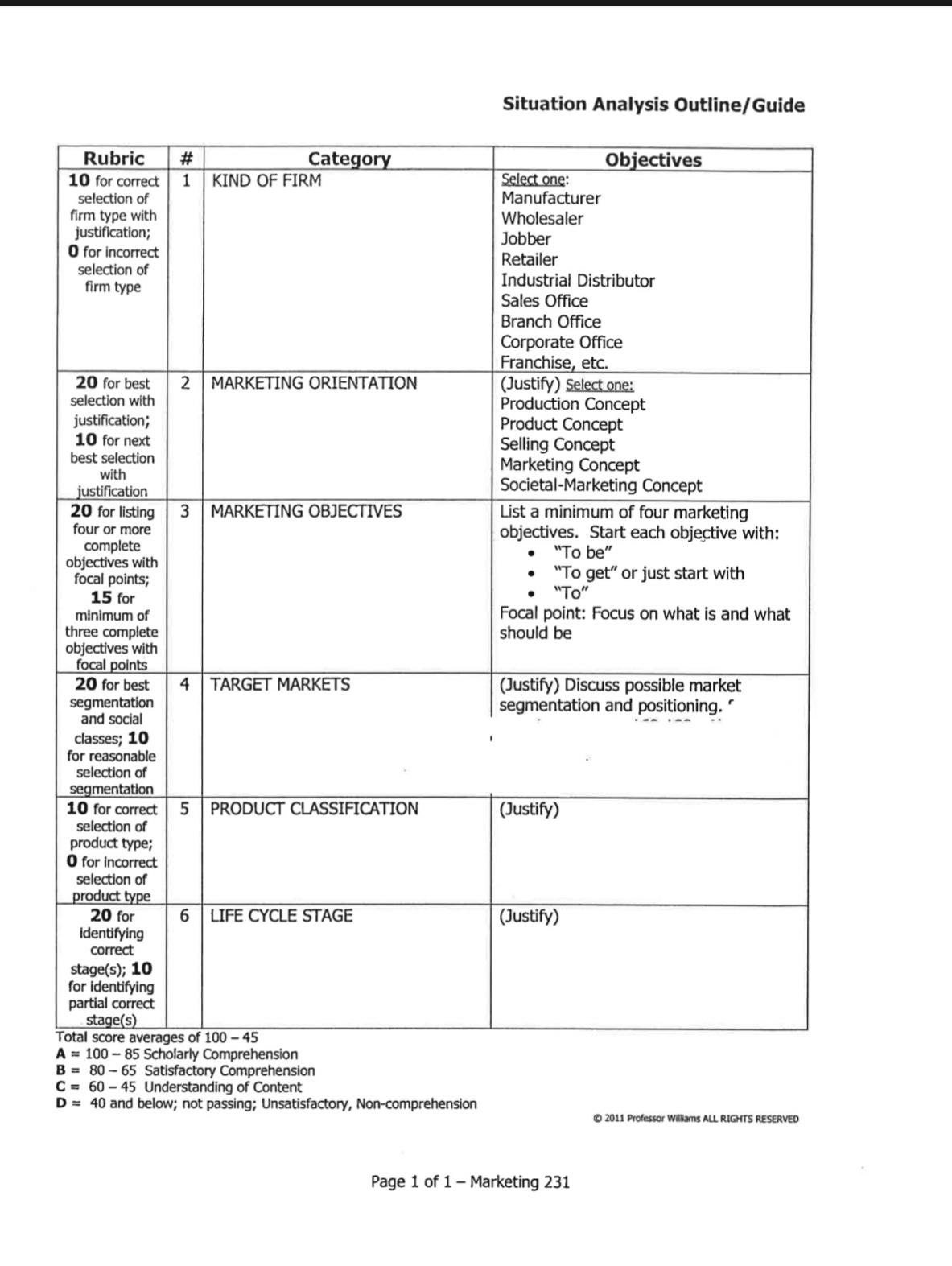Answered step by step
Verified Expert Solution
Question
1 Approved Answer
HOLLY FARMS SITUATION ANALYSIS: Use the categories on the matrix to complete the rubric components in order to provide your completed analysis response 1
HOLLY FARMS SITUATION ANALYSIS:
Use the categories on the matrix to complete the rubric components in order to provide your completed analysis response



1 of 3 Holly Farms Case: Putting the Chicken before the Egg Holly Farms Corporation thought it had created the Cadillac of poultry with its roasted chicken. The fresh, fully cooked bird seemed just the ticket for today's busy consumers: A modern, more convenient alternative to raw chicken. It scored big in a year of test marketing. The company began phasing in national distribution of the product in the fall of 2009. But it fared so dismally that the planned expansion into more markets was halted so that Holly Farms could reconsider its marketing strategy. Company executives acknowledge that the "false start" for the roasted chicken product hurt fiscal 2010 earnings. One analyst, Bonnie Rivers of Salmon Brothers, Inc. cites the blunder as a major reason she slashed her estimate for Holly Farms' profit for the year ending May 31, 2010 by 22% ($2.25 a share from $2.90). Higher feed and persistently low chicken prices also contributed to the lower profit projection. In fiscal 2009, the Memphis, Tennessee based poultry and food concern had earned $71.7 million (or $4.31 a share) on revenue of $1.42 billion. Grocers are buying far less of the product than Holly Farms had hoped, he says, because they believe it does not last long enough on the shelf. Until this problem could be solved, Holly Farms decided not to expand distribution of the chicken, now available in about 50% of the markets nationwide. Holly Farms' experience is a classic example of how a food company can stumble when launching a new product. Although extensive test marketing identified strong consumer support for the product (22% of Atlanta women surveyed said they had tried it, and of those 90% said they would buy it again), the company failed to detect the concerns and resistance of its front-line customer, the retailer. Several retailers concur that the problem was not with the roasted chicken itself. Ray Heatherington, meat merchandising manager for Safeway Stores Incorporations, Northern California division, calls the product "outstanding." But his stores dropped it after several weeks because it's short shelf life. Grocers bought far less of the product than Holly Farms had hoped because they felt it did not last long enough on the shelf. According to Holly Farms, the chicken's quality is maintained for a good 18 days. To be safe, it marked the last day sale date of 14 days after the chicken was roasted. However, it can take as long as 9 days to get the chicken to stores from the North Carolina plant Holly Farms built especially to house its fully cooked operation. That delivery time does not give grocers much lead time. To avoid being stuck with an outdated backlog, many wait until they run out before reordering. Page 1 of 2-Marketing 231
Step by Step Solution
There are 3 Steps involved in it
Step: 1

Get Instant Access to Expert-Tailored Solutions
See step-by-step solutions with expert insights and AI powered tools for academic success
Step: 2

Step: 3

Ace Your Homework with AI
Get the answers you need in no time with our AI-driven, step-by-step assistance
Get Started


